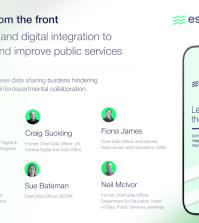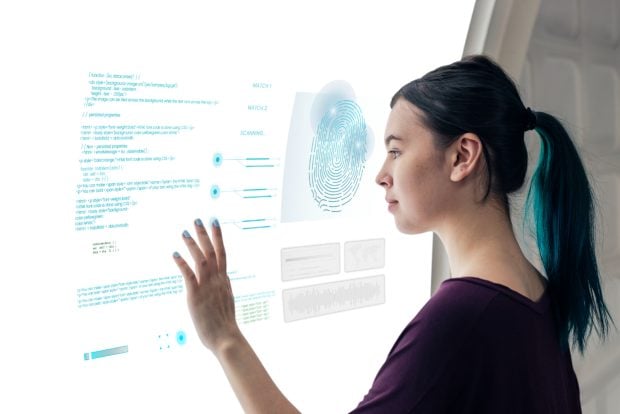Recover and thrive: regulating mobility in a disrupted world

As a new mobility paradigm emerges, governments must support data-sharing between transport strategists, planners, and operators. At a Deloitte webinar now available on demand by completing the form below, experts advised the 350-strong live audience on how best to use insights to drive world-class transport.
Data analysis has become increasingly essential for regulators and other public transit decision-makers, but its usefulness has been starkly illustrated as transport operators have had to rapidly adapt to the dramatic impact of Covid-19 on travel.
One example heard during the recent webinar demonstrated how Network Rail used data science to minimise the risk of disruption on its network. The UK rail infrastructure operator was already developing a predictive maintenance regime through its Intelligent Infrastructure project, when the pandemic meant it had to abruptly reduce passenger services while increasing those for freight.
Freight trains tend to run on distinct lines to passenger trains, and their impact on the rail infrastructure is different, explained Alex Schock, head of programme delivery and data at Network Rail.
“From the maintenance side, we’ve had to look at the particular routes which have heavy freight traffic and make sure that we can keep them running, and don’t have infrastructure failures that would cause severe delays. In times like this, we don’t want that,” he said.
Schock’s team used some of the algorithms it was already developing to predict what would happen to the infrastructure degradation rate when the traffic flow was altered. “We’ve been using the capabilities that we’ve been developing to see whether we can give our infrastructure colleagues some confidence that when increasing traffic in particular areas we’re not going to do damage to the track,” he said.
When the algorithms do predict an impact on the network, maintenance teams can be put to work to prevent it.

Using a data science approach has been highly useful compared to the organisation’s traditional way of operating using policies and standards that have existed for years, Schock added. “It’s especially at times like this where we can look to challenge the status quo and really use a data-driven approach.”
The example demonstrates the power of data science to help transport authorities adapt to the disruption caused by the pandemic. And as Simon Dixon, global transportation leader at Deloitte pointed out, it isn’t just the disruption caused by the latest coronavirus outbreak that must be managed, but that caused by the emergence of new technologies and changing passenger behaviour in recent years.
Privacy and cybersecurity concerns
Piyush Pandey, global smart cities cyber leader at Deloitte US, explained that cities are effectively becoming centres for big data, which could provide an almost real-time picture of the urban environment, and enable more efficient and more sustainable mobility systems, as well as new services to improve customer satisfaction.

But he warned that, in order to use and share the data, a framework would be needed to allow aggregation of data from a wide range of sources including smartphones, roadways and technology in vehicles themselves.
The sharing, collection and use of such data raises data and privacy risks for both the people and organisations to which the data relates, and the operators of the mobility systems that store and share the information, he said.
These range from ethical risks such as whether the data would amplify systemic biases, to an inability to fully realise the vision and value of the data because of a lack of the skills needed to analyse and process it, Pandey said.
Cybersecurity is also a concern. The transit sector is likely to see a new wave of digital transformation as economies move into a state of recovery following the pandemic, in particular to ensure safe environments for staff and passengers, Pandey predicted. For example, contactless wireless technologies for payments and security controls using biometrics and connected devices to manage occupancy of vehicles.
But the more systems are connected, the more opportunities there are for “malicious actors” to penetrate them and cause disruption, Pandey warned. Cybersecurity solutions would have to be developed with a diverse set of stakeholders in mind – including suppliers, manufacturers, multiple levels of government, the operators, and consumers. And of course, there must also be consideration of the technologies, vehicles, devices, and entities the cybersecurity tool is designed to protect.
“You name it, the list goes on and on. There is an ever-expanding ecosystem of information and communication technology [that must be considered],” Pandey said.
Cybersecurity is made more complex by the integration of new technology and older equipment that was never designed with cybersecurity in mind, he added.
Perceptions of competition
Another barrier to the sharing of data is competition, according to Thomas Deloison, mobility director at the World Business Council for Sustainable Development (WBCSD). “We have a lot of resistance from the private sector, and sometimes also the public sector, to sharing data because there is a notion of losing access to the user, and somehow losing the competitive advantage that has created the service.”
In order to break down this barrier, it is important that everyone understands that sharing data is what creates value, Deloison said.
The sharing of data can trigger innovation and lead to the creation of add-ons that bring benefits to users of existing services, he noted. For example, better management of a zero-emission plan would benefit both public health and the environment and facilitate access to transport by the most vulnerable populations of a city, he said.

“Essentially the elements of competition can be overcome if every party understands that the value often resides at the periphery,” he said.
Deloison added that the WBCSD and its members believe that data sharing is “the next frontier” in making transport more sustainable. In January, the organisation published a set of principles for data-sharing for urban mobility management across public and private stakeholders.
Trust is core
Like Pandey, Deloison also flagged privacy and ethics concerns over data sharing. He suggested the creation of a body established to ensure the ethical use of data and governance transparency. “I make a comparison with medicine, where there are ethical groups in hospitals and universities. Why not do the same for data?” he said.
Faye DiMassimo, senior advisor to the mayor for transportation and infrastructure at the Metropolitan Government of Nashville and Davidson County, stressed the importance of public trust.
“Trust in how we collect data, how we use data, and how we protect data, are all a core part of having performance-driven mobility,” she said. “We’re really managing people, not the rail network, or cars or any of those things, so we’ve got to manage with both our heads and our hearts to deliver the great performance and mobility systems that modern cities like Nashville desire.”

And she made clear that improving performance in the mobility sector also drives economic, equality and health benefits, making it even more important to consider holistically how data is used.
Regulatory race
Rana Sen, transportation and smart city initiative lead at Deloitte US, pointed out that some recent technology disruptions to the mobility sector had outpaced regulation, and that officials were having to catch up. DiMassimo agreed that this is a challenge, and gave the example of micro-mobility technology such as electric scooters as one area where the city of Nashville had been forced to regulate reactively.
“Micro-mobility took over the market, and met a public need that we had not really recognised. We didn’t have a framework – management, regulatory or otherwise – to really be able to ensure that the technology performance would meet our needs,” she explained.
The transport authority decided that the best approach was to provide micro-mobility operators with its expectations on performance and metrics on what the city needed for operations to be successful, and then let the market decide how best to deliver that, rather than introduce new regulations.
“We want to let the market do what the market does best, which is help us bring that innovation and that thought around how to do things that we as the transport authority may not be actively involved in developing. So I think there’s a blend of both performance and regulation that have to come together,” DiMassimo said.
Covid-19 challenges

Whatever changes and disruption transport authorities and operators had already been dealing with, panellists agreed that a new set of specific challenges had been created by Covid-19, and that this disruption would continue for some time to come.
One of the challenges is a redefinition of safety, Sen said. The transport industry has typically thought of safety in terms of preventing accidents, but that definition has now expanded to cover issues including more thorough hygiene and sanitation. As economies open up, further changes are occurring, such as repurposing infrastructure to create more bike lanes or pedestrian space, or using the pavement for dining areas, he pointed out – creating yet more challenges that must be addressed.
DiMassimo agreed that Covid-19 is creating significant change, the full scope of which will become apparent over time when outstanding questions about the pandemic and its future impact became clear.
“It’s going to reshape and reframe the mobility space for a very long time, and we don’t know all the specifics yet, because they are coming at us, even as we speak. But what is really critical is that local governments have got to be more nimble, innovative, creative and tolerant of change than they traditionally have been in order to manage this effectively in policy and operations,” DiMassimo said.
More than 350 people in 52 countries watched this webinar live. View it on-demand and access the presentation slides by completing the form below.
For further information on how to get data – and transit users – moving more easily, please email [email protected], or visit the website here.

















